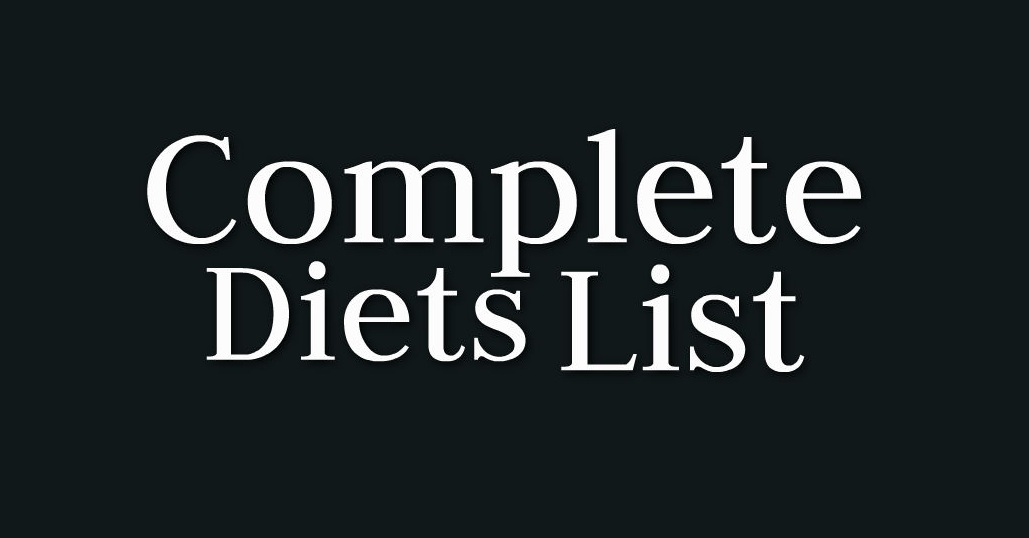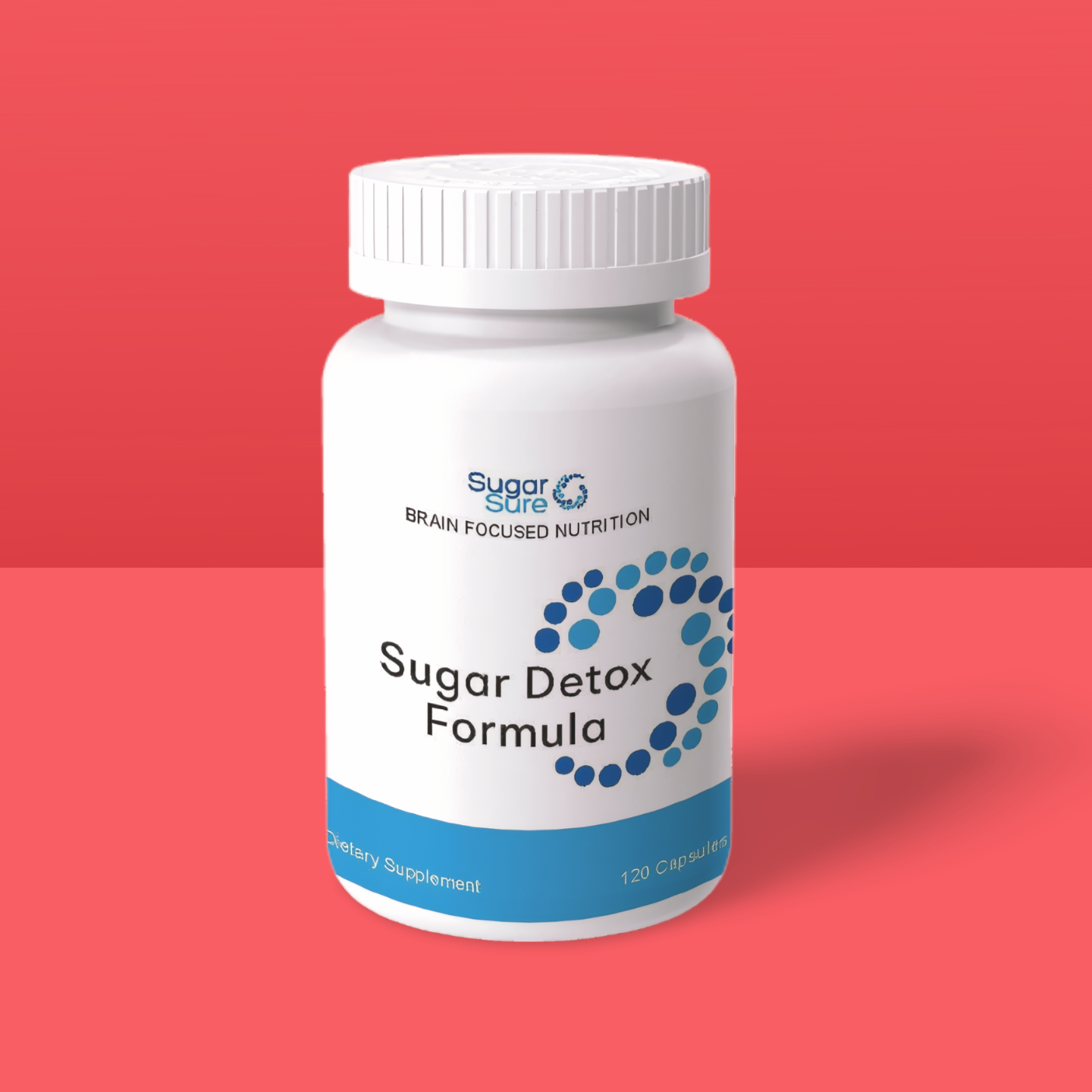Complete Diet List
The word “diet” has a couple of different connotations. All the food that we eat it’s one diet definition. Other definition means that a diet is a weight loss plan followed by people based on personalized prescriptions. Why when people say the word diet, everybody immediately thinks that it means to suffer or be deprived of which certain habits? Psychologically, many people feel like they need to suffer as much as possible on a diet to say they did everything possible to accomplish their dieting goal. Whether it is losing a few pounds to look good in our clothes, or drop some weight for a special occasion, or dieting down to low body fat levels because we have health issues, it people consider that they must endure some agony when it comes to a diet.
We must recognize that everybody has a different method when it comes to dieting and it is important not to criticize one diet craze over another. Find a dieting method that works for you for days, weeks, months, or even years is the main scope of this diet list. A dietary program should be tailored to each people based on different factors. Some of these factors are body type, activity levels, metabolism, hormonal or psychology factors, cultural influences, food preferences, medical disorders, etc.
Just don’t give up, do your diet homework before you start, be patient, and always remember that if a diet sounds too good to be true and promises nearly overnight results, then it probably is not for you, nor is it true.
There are many different diet categories based on what you are trying to achieve. The main factor in these categories is “balance.” We all need a balanced diet for good health. The 2 most important factors when you analyze your diet are vitamins and minerals.
Vitamins are the “ABC’s” of our dietary intake. For example, Vitamin A helps our vision; Vitamin B is for energy production and to reduce stress; Vitamin C helps to keep our skin clear and to stay illnesses, and Vitamin D helps our bones, teeth, and hair.
Minerals help to release energy from the food we eat and it helps us to make better decisions. Common minerals are calcium to strengthen our bones, iodine to increase energy levels, and iron to prevent tiredness and fatigue.
Most Important diet categories are:
Diets Based On Beliefs
Most of the belief-based diets are built on ceremonial religious beliefs around the world. Religious laws for restricting food and drink (“fasting”) as a form of dieting, was determined to be a call to holiness. Dieting in religion as deemed a mechanism that enables people to improve their body or as it is referred to in religion “God’s temple.”. Fasting or dieting in various religions is considered a mean to acquire the discipline needed to resist temptation, or an act of atonement for sinful behaviour, or as the cleansing of evil from the body.
Dieting under religious laws can last from a day (sunrise to sunset) as practiced by the Jewish religion; dieting for a few hours as observed by Catholics or Mormons; or for several days, as in Ramadan for certain Muslims. Two religions don’t have the same ideology about dieting, health, and spiritual wellness, but many do embrace similar practices. All human body organs, bones, skin, muscles, and nerves, need nutrition to survive, grow and regenerate, to function and develop healthy but all these facts are touched by our philosophical, spiritual or as described above, by religious beliefs. Some of the most based beliefs diets are:
- Buddhist diet: Based on the Five Precepts, the Buddhist diet is designed to eliminate suffering by limiting attachment to worldly goods and increasing good in the world. The diet prohibits killing animals, as well as viewing food as anything other than nourishment. As a result, mixing food into a paste-like substance (to eliminate any particular flavor) is encouraged.
- Edenic diet: Thought to have been followed by Adam and Eve in the Book of Genesis, the Edenic diet only allows the consumption of whole, organic foods. Meats are also prohibited because “no sacred religion gives you permission to slaughter living beings‘. Although the diet prohibits any food that was not available during Adam and Eve’s time, followers can consume their favorites in small quantities on an occasional basis.
- Islamic Diets: Alcohol, as well as any food prepared with it, is banned. Only vegetarian animals can be eaten. They must slaughter according to Islamic law, meaning a Muslim must cut all the blood vessels in the neck in the name of Allah. These meats are considered “halal”. All animal products, such as shortening, from non-halal animals, are forbidden. Birds with talons and prey on other animals are banned.
- Hindul Jain diets: Both diets are vegetarian based because they follow the principle of nonviolence. Some Jains also avoid milk and eggs. Honey is prohibited because bees may suffer during harvesting while garlic and onions are avoided because they are “hot” foods that potentially increase sexual desire. Root vegetables, such as potatoes, are not eaten by strict followers because they believe you are killing insects during harvesting, as well as living bacteria that exists in plants. Alcohol is also banned.
- Ital: This is often referred to as a Rastafarian Diet and is based on the belief that the body is a temple that should be kept pure. Most people who follow this diet are vegans who base their diets entirely on fresh fruits and vegetables.
- Kosher Diet: Also known as the Jewish Laws of Kashrut, a Kosher Diet is very detailed, much like the Islamic Diet. Meats cannot be eaten with dairy products, grape products can only be eaten if they were made by a Jewish person, and fruits and vegetables must be closely inspected for bugs.
- Word of Wisdom Diet: Also known as W.O.W., this diet is founded on the belief that there is a natural link between diet and religion. There are seven rules in total; those who follow them are thought to be blessed with longer and healthier lives.
- Latter-Day Saints: Similar to W.O.W., the Latter-Day Saints diet is practiced by Mormons and forbids the use of alcohol, coffee, and tea, as well as hot drinks, sodas that contain caffeine, and energy drinks. They do believe that grains are the foundation of a healthy diet and should be accompanied by beans, fruits, oils, milk products, and vegetables. Meat is allowed in smaller portions.
Weight Management Diets
The main scope of such diets is people’s desire to lose weight or to maintain it. After are followed properly, some are viewed as having no effect or even including some major health risks. What are the most important weight control diets, such as low calorie, very low calorie, low carbohydrate, low-fat diets or vegan and semi-vegan?
Low and Very Low-Calorie Diets
These diets restrict the number of calories a person consumes each day to help them lose weight. In many cases, these weight loss programs are managed by doctors or nutritionists. To take the daily needed energy due to low-calorie food eaten, our bodies will attempt to receive it from stored energy in body fat. A low-calorie diet is categorized by the type of foods involved and how are prepared. For example, a low-calorie menu contains vegetables, fresh fruits, whole-grain cereals and bread, nonfat milk, yogurt (and other dairy products), lean meats, poultry, fish, and beans. When preparing such meals, cooking methods include roasted, baked, broiled, steamed, or even microwaved methods.
Below are the most famous and controversial low-calorie diets:
- Weight Watchers: Based on a unique system that has assigned point values to every food imaginable, followers are allowed to consume a certain number of points each day, depending on their body weight.
- Nutrisystem diet: Nutrisystem focuses on a diet that is low calorie (usually around 1200 a day), low fat, controlled carbs, and protein. Meals (including breakfast, lunch, dinner, and snacks) are delivered to an individual’s home and they are encouraged not to consume anything else.
- The Hacker’s Diet: This computerized program does not limit you to a certain food. Instead, it focuses on the only way you can truly lose weight. Burning more calories than you consume. Using the program, you can monitor your food intake and track energy consumption and expenditure.
- SiegaI’s Cookie Diet: This diet requires users to limit their calories to 1,000 to 1,200 each day. 500 of the calories come from the Cookie Diet’s hunger controlling snacks while the remaining calories are from a meal.
- Body for Life: Boosting that it helps people lose at least 25 pounds, this 12-week program requires that people eat 5 or 6 small meals a day that includes lean, protein-rich foods and whole-grain or unrefined carbohydrates. Two meals must have a vegetable. In addition, followers must consume 1 tablespoon of an oil high in monounsaturated fat each day.
- South Beach Diet: Created by Dr. Arthur Agatston, the South Beach Diet has three phases. While it doesn’t require counting calories or weighing food portions, it does rely on just the right combination of fats and carbohydrates to produce weight loss.
- Jenny Craig: While meeting with a personal consultant, you design a meal plan one week at a time that promotes weight loss. The meals are delivered to your door.
- Sugar Bustersli This plan eliminates refined sugar and flour from your diet and replaces it with a high fiber diet that consists of the right fruits, vegetables, whole grains, and proteins. It focuses on low glycemic index foods that will ensure your blood sugar levels remain steady while you lose weight.
- Zone Diet: The Zone Diet focuses on eating high-quality foods, balancing your portions, and maintaining a diet that is ideally balanced between proteins, carbs, and fats.
- Tongue Patch Diet: Also referred to as The Weight Reduction Patch, Miracle Patch, or Chugay Patch, this diet requires followers to have a Marnex mesh patch attached to the top of their tongue (through a cosmetic surgery procedure) to make eating solid foods so painful that they will only consume fluids.
- Sonoma diet: Inspired by the Mediterranean diet, the Sonoma diet focuses on flavorful foods that are packed with nutrients, such as almonds, bell peppers, grapes, olive oil, and strawberries. Using three “waves”, followers learn how to put an end to a sugar addiction and satisfy their cravings with healthy foods instead.
- Smart for Life Cookie Diet: Each Smart for Life cookie is actually a meal that incorporates all the necessary ingredients for a well-balanced meal. They give you just the right amount of complex carbs, protein, and healthy fats to lose weight, enhance your energy level, and maintain an optimal level of health.
- Slimming World diet: This diet splits food into three different groups: Free Foods, Healthy Extras, and Syns. While you can eat plenty of Free Foods, Healthy Extras and Syns are restricted, which results in weight loss.
- Scarsdale Diet: Created by a doctor in the 1970s, the Scarsdale Diet is based on the idea of eating the right combination of carbs, fats, and proteins. (43% protein, 22.5% fat, and 34.5% carbs) It allows three meals a day, but snacks are banned. It also recommends drinking a minimum of four glasses of water a day.
- Warrior Diet: The Warrior Diet involves two different phases that change your eating cycle to maximize the number of calories you burn in a single day. One phase involves undereating while the second phase requires that you overeat.
A “very low calorie” diet is not just any low-calorie diet. Instead, it is a special type of diet which replaces all of your meals with well-prepared formulas. A very low-calorie diet is a unique diet that provides up to 800 calories per day. It consists of liquid shakes, soups, or meal bars, which replaces all of a person’s regular meals. This type of diet is used to promote quick weight loss, especially for peoples who need a quick jump-start under to fight obesity. A very low-calorie diet has been reported to allow people to lose about 3 to 5 pounds per week. There also are some very-low-calorie diets in which their developers claims that will help you to lose more than 10 pounds per week. Monitored by physicians this type of diets can quickly improve medical conditions linked to obesity, diabetes, and other conditions.
- Breatharian Diet: This New Age “diet” states that you don’t need food or drink to live. Instead, you survive solely on air and light.
- K-E Diet: Short for Ketogenic Enteral Nutrition, this ‘diet’ requires followers to have a small feeding tube inserted, which supplies your body with a unique solution that fat-rich, very low calorie, and contains protein. The feeding tube is only left in for a specific number of days.
Low Carb Diets
“Low-carbohydrate” diets are typically high in protein and fat. A healthy low carbohydrate diet should contain lots of vegetables, a small amount of fat and a moderate protein intake. The goal of a low-carb diet is that by decreasing carbs, body’s insulin levels will be lowered, which causes people’s body to burn stored fat to get energy. In the end, this will lead to weight loss.
Detox Diet
We think of a detox diet as a natural cleanse for the human body, which gives our body and mental outlook a new reboot and it helps us lose weight quickly. There are many different types of detox diets, like colon cleanses and coffee enemas. Detox is short for detoxification which is more associated with a person withdrawing from alcohol or drugs. However when it comes to food, a detox diet is a fast procedure that helps the body to remove unwanted pounds and to get rid of toxins within the body.
Vegetarian Diets
Vegetarian diets do not include any meat and are highly approved by nutritionist’s and physicians. Vegetarian diets contain a combination of grains, nuts, seeds, fruit, peas, beans, lentils, and vegetables, with some vegetarian diets including dairy products and eggs. Semi-vegan diets include in some occasions meat.
Lacto vegetarianism: Also referred to as a lactarian diet, this vegetarian based diet allows followers to consume milk products, including milk, yogurt, butter, cheese, cream, kefir, and ghee in. However, it does not allow eggs.
Lacto-Ovo Vegetarianism: Considered to be the most common type of vegetarianism, lacto-ovo vegetarians are not allowed meat, but can consume eggs and milk products.
Below are the most important vegetarian and semi-vegetarian diets.
- Vegan diet: A vegan diet bans meat, poultry, and fish, as well as dairy products and eggs.
- Flexitarian diet: Flexitarians usually follow a diet that is free of meat. However, they do occasionally indulge in meat or fish. For example, someone may eat meat once a week or only at dinner. It’s all about flexibility.
- Kangatarian diet: A diet that has only recently emerged, the Kangatarian diet only allows individuals to consume vegetables and kangaroo meat. Kangaroo is allowed because they roam free, but they must be killed with one shot to the head. Kangaroo is low fat and heart healthy.
- Pescetarian diet: Pescetarians eliminate all land animals and birds from their diet, but do eat fish and seafood, as well as grains, beans, nuts, fruits, and vegetables.
Crash Diet
People who wish to lose weight fast and furious will try anything to drop those excess pounds, like a “crash diet.” A crash diet is a diet that severely cuts caloric intake, almost to the point of starvation. However, a crash diet does provide dramatic weight loss in a matter of days or even weeks, depending on your initial body weight. A typical crash diet can let a person lose as much as 10 to 20 pounds within a week and even more.
Finding a crash diet that works for you can be a daunting task because many of them are considered not to be healthy. Some of the most controversial crash diets are:
Medical Reasons Diets
Intolerance or allergies are two causes why people are obliged to follow these diets. Doctors can prescribe this kind of diets to people with particular health-related conditions.



